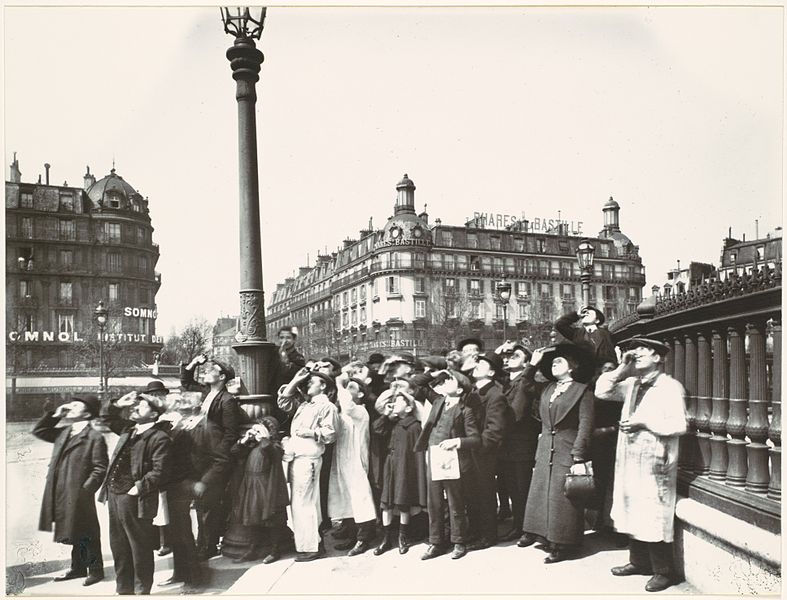 |
| The Moon by John Adams Whipple (Public Domain) |
The Moon by John Adams Whipple (1853-54) is a relatively simple view of the moon. It’s significant because it was an early photograph showing details of the moon’s surface. The viewpoint is fairly straightforward, with the moon being the only object in the photo.
 |
| During the Eclipse by Eugene Atget (Public Domain) |
Eugene Atget’s During the Eclipse (1912) is different from Whipple’s work in that although the moon is the subject of the photograph’s meaning, it’s not the physical object being photographed. Instead, Atget photographs a crowd of people viewing the eclipse. The choice to photograph reactions to the moon instead of the physical object brings a social aspect to the idea of the moon. The crowd shows excitement and energy that a still photo of the moon itself does not have.
Surface of the Moon, Day 319, W-F (1967) by the U.S. Geological Survey and NASA, Surveyor III wasn’t even intended as artwork when it was first created. This piece shows how scientific documentation can be seen as art when given the right context. This piece differs from Whipple and Atget’s works in purpose, but shares meaning with both pieces. Both The Moon and Surface of the Moon are representations of the moon itself. They both were created using leading technology of their times. They both show the beauty of the moon itself. Surface of the Moon and During the Eclipse have less in common in terms of composition, but have much in common in terms of meaning. Both of these pieces focus on events relating to the moon- an eclipse and a NASA surveyor viewing the moon. They both capture the excitement of exploration and the wonder of the moon as a mysterious object.
The similarities and differences in the works of art presented have made me consider different perspectives of the same object or event. Seeing how different artists all view, and choose to convey, the same object differently was very eye opening. I appreciated that it challenged my thoughts on how photographs can be composed to give meaning to even simple objects.




No comments:
Post a Comment